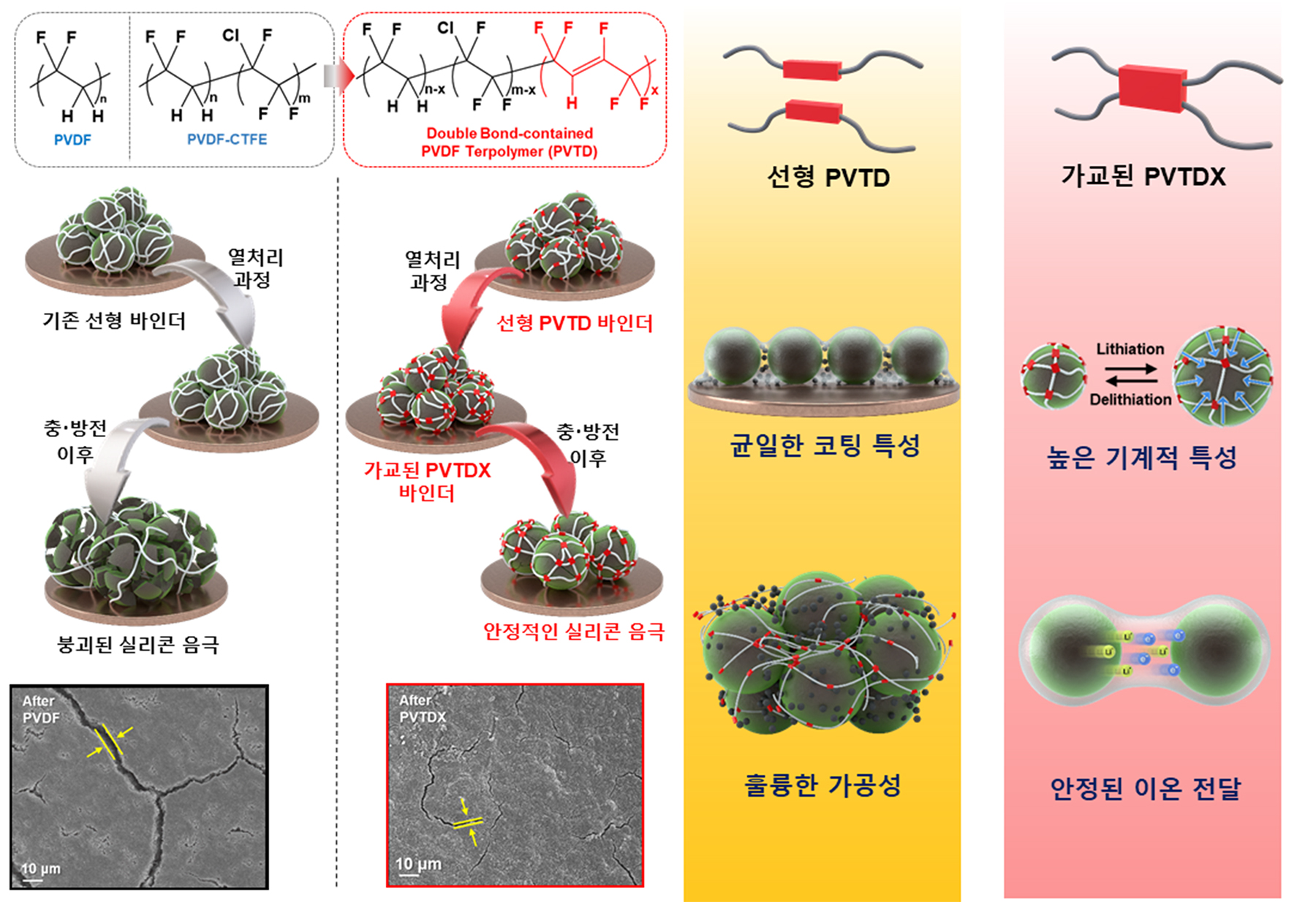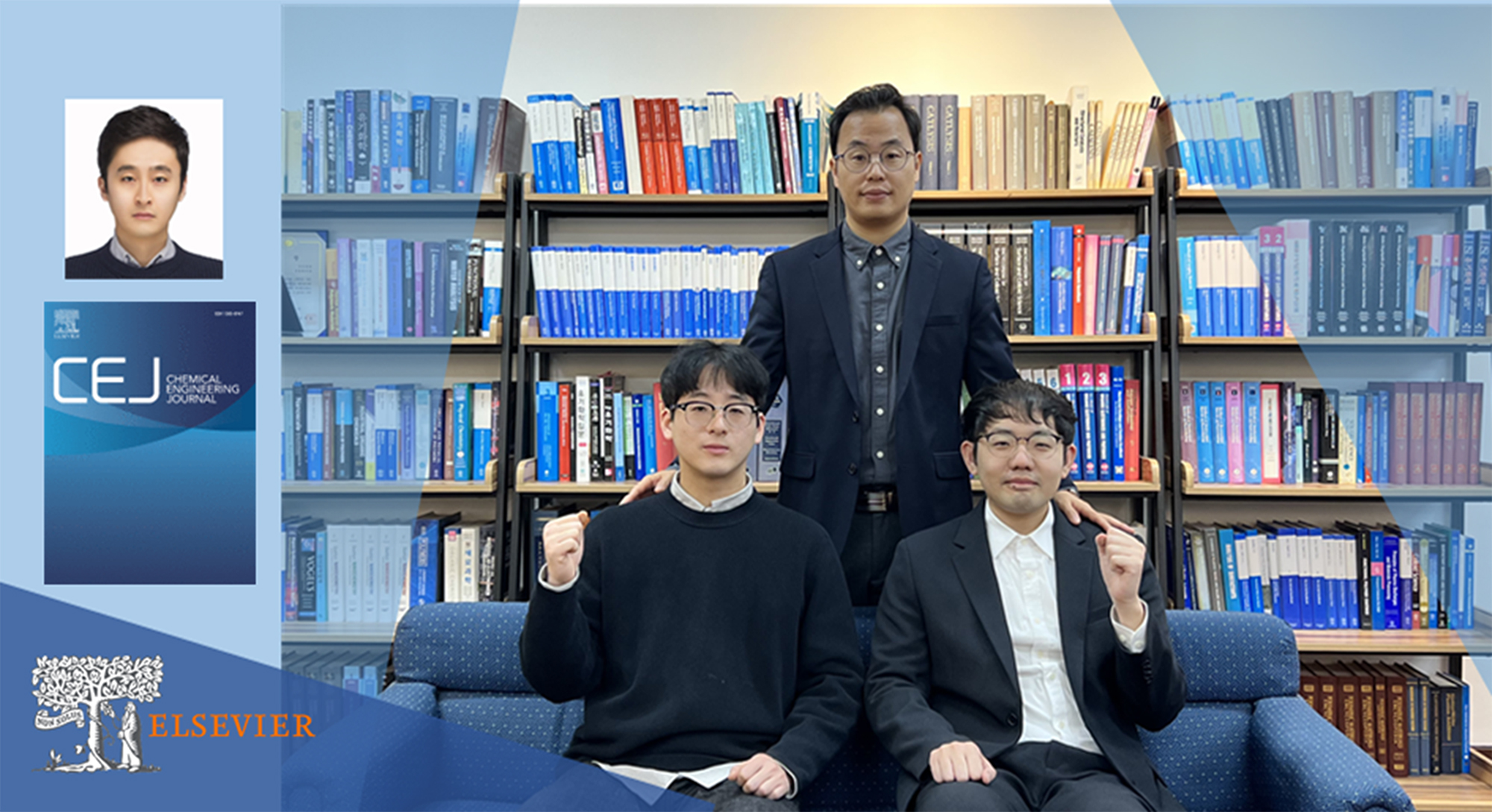연구/산학
PKNU Research 1000
| Cho Kie-Yong | Developed a high-performance silicon cathode battery | |||
| 작성자 | 대외협력과 | 작성일 | 2024-06-14 |
| 조회수 | 24247 | ||
| Cho Kie-Yong | Developed a high-performance silicon cathode battery | |||||
 |
대외협력과 |  |
2024-06-14 |  |
24247 |
PKNU and PNU joint research team have developed a high-performance silicon cathode battery
- prof. Cho Kie-Yong and others applied the development of a cross-linked copolymer binder based on fluorine-based polymers
- paper in the international academic journal <Chemical engineering journal>

△ The diagram and characteristic image of stable electrode actuation through PVDF-based cross-linkable copolymer binder.
The joint research team of professor Cho Kie-Yong (industrial chemistry) at Pukyong National University and professor Lee Jin-Hong (department of organic material science and engineering) from Pusan National University announced that they had developed a high-performance cathode battery using a cross-linked binder material based on polyvinylidene fluoride (PVDF).
The research team achieved this by developing a cross-linked copolymer binder based on PVDF, a fluorine-based polymer material in the form of a three-dimensional network used in silicon anode materials used in next-generation batteries such as secondary batteries.
Graphite cathodes, the electrode material currently in use, have a low theoretical capacity, so silicon is being developed as a promising cathode material to manufacture electrodes for next-generation batteries with high capacity. However, silicon materials have the limitation of low commercial viability due to large volume changes during the charging and discharging process.
To ensure the stability of the silicon cathode, binders using various materials such as polyvinyl alcohol and polyacrylic acid have been extensively studied, but the disadvantage is that the linear chains of the binder have low resistance to stress generated during volume expansion.
To solve this problem, the research team succeeded in improving the stability of the silicon cathode and increasing electrode capacity and cycle life by applying a three-dimensional cross-linked network based on a fluorine-based polymer that has high electrochemical stability and is widely used in the manufacture of commercial electrodes.
Doctoral student Kwon Young-Je, the first author of this research paper, said, "Cross-linkable copolymer binders based on fluorine-based polymers show improved rheological properties and better electrolyte affinity, and enable the stable and effective production of silicon anodes. At the same time, particle pulverization of the silicon anode can be alleviated to ensure the stability of the silicon anode."
The research was conducted with support from the National research foundation of Korea for Young researchers program and the Ministry of trade, industry and energy, and the research results have been published in a paper titled 'a stress-adaptive interlinked 3D network binder for silicon anodes via tailored chemical bonds and conformation of functionalized poly (vinylidene fluoride) (PVDF) terpolymers' in the international academic journal <Chemical engineering journal> (IF 15.1, JCR top 3.2%). <Pukyong Today>

△ The research team (professor Lee Jin-Hong at Pusan national university, master's student Kim Se-Hoon, professor Cho Kie-Yong and doctoral student Kwon Young-Je)